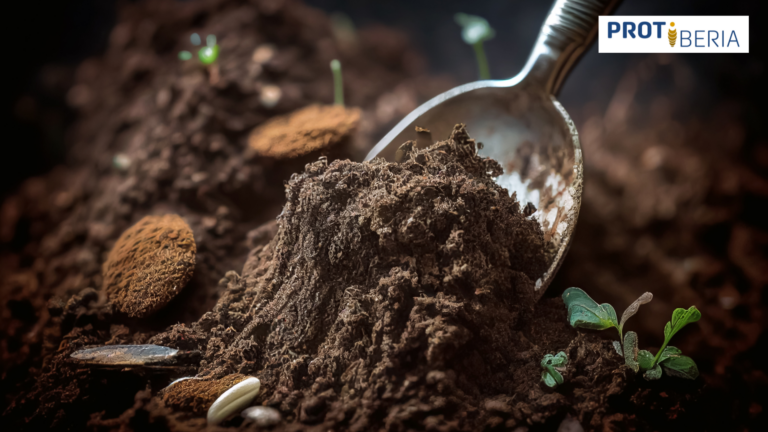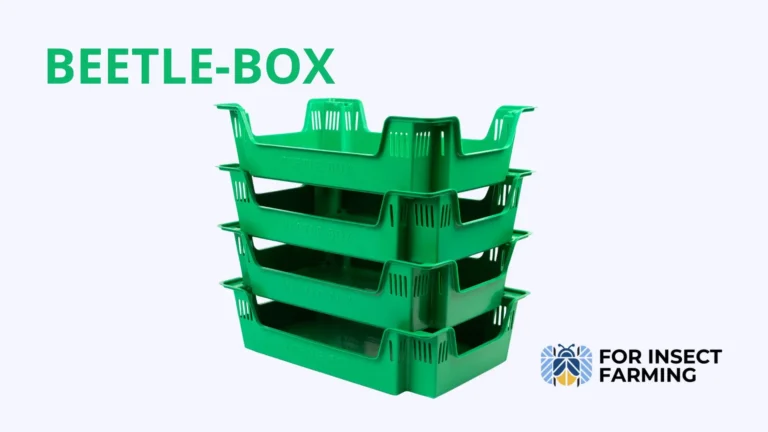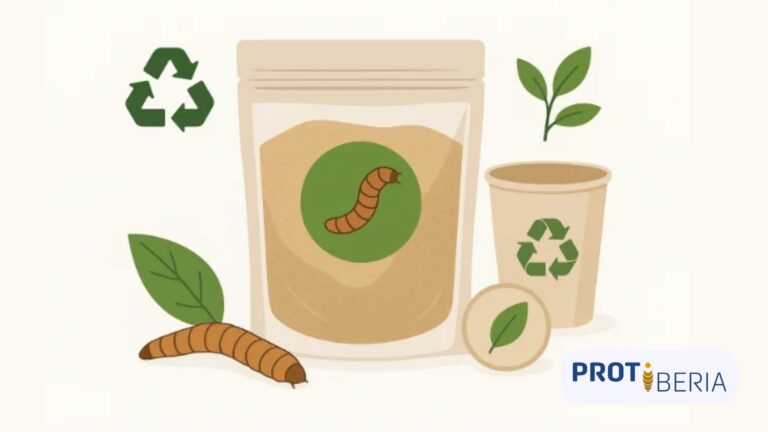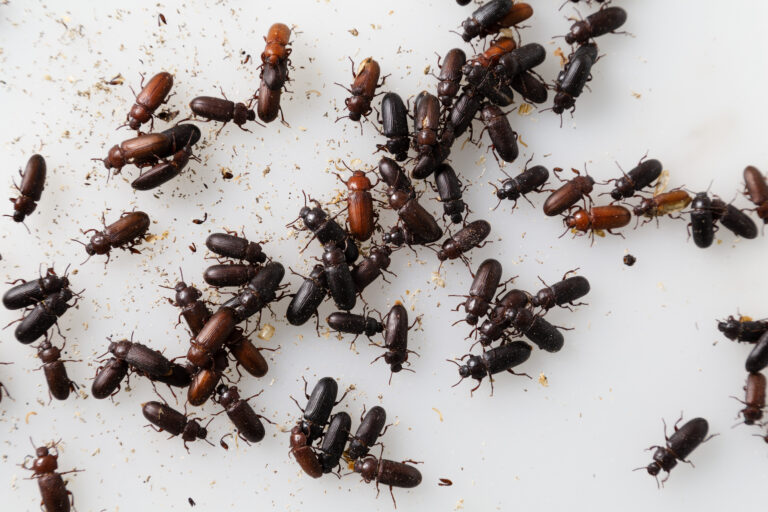| The scarcity of fertilizers and the environmental problems resulting from poor agricultural practices make it essential to find alternative sources of nutrients. In this sense, frass, the excrement of mealworm (Tenebrio molitor), can be a very attractive option due to its excellent nutritional and microbial properties. |
Many of the fertilizers used today are synthetic products made from chemical raw materials aimed at increasing crop production. Despite their high nutritional values, they have negative impacts on the environment and human health.
Among the main problems generated by traditional fertilizers are water pollution, soil degradation due to salt accumulation and acidification, loss of biodiversity, greenhouse gas emissions and long-term dependence on fertilizers.
On the other hand, the use of various pesticides in combination with poor agricultural practices results in poor soils that lack biodiversity of any kind. Microorganisms in the soil are vital for agriculture, as they decompose organic matter, participate in mineralization, control diseases, improve soil structure and stimulate plant growth. Their presence and activity benefit soil fertility and sustainability in agricultural systems.
However, proper management and sustainable agricultural practices can help mitigate these problems and minimize negative impacts on the environment. In this sense, frass is presented as a sustainable and efficient alternative to improve crop productivity and health and as a biofortifier that helps improve soil microbial life.
What we know as frass
Frass is the matter excreted by insects throughout their life cycle. This by-product is considered a biostimulant, that is, it is not only a source of nutrients, but also stimulates natural processes that improve the absorption and assimilation of nutrients, reduces abiotic stress (abiotic being understood as temperature, light, humidity, salinity, etc.), and improves crop quality from an agronomic point of view thanks to properties such as the increase in the cation exchange capacity and soil permeability.
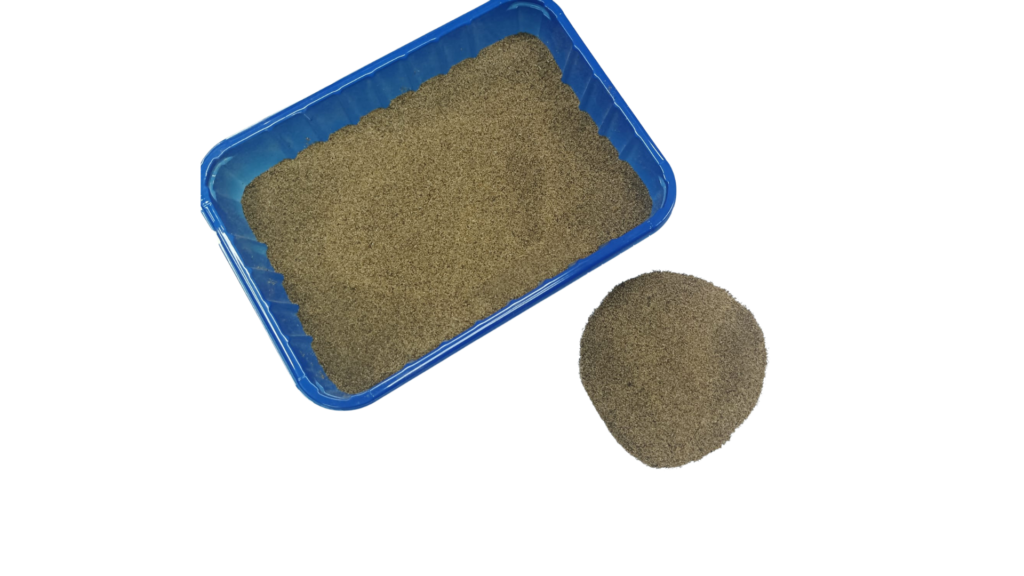
Agronomic properties of frass
Among its main characteristics, it is a dry and odorless product, with an NPK index of 4-3-4 (4% nitrogen, 3% phosphorus oxide and 4% potassium oxide, readily available for plant uptake). These values are very high and balanced compared to other organic fertilizers. The pH is around 6.5 which allows for optimal nutrient assimilation. In addition, it is free of heavy metals, one of the main problems in various manures. Another advantage is that it has an organic matter content of over 85%, a factor of great importance considering the lack of organic matter in most Spanish and other Mediterranean soils.
On the other hand, the moisture content is 10%, which means that 900 kg of dry matter per ton is incorporated into the soil. In addition, frass is 100% insect excreta , it is not mixed with anything else, and as whole process of mealworm breeding is on a dry basis, it is posible to separate frass from the food and the rest of the elements that may be present.
Microbiota presence in insect excrement
The intestinal microbiota of insects is known for its diversity and benefits. In the case of Tenebrio molitor, a number of bacteria have been found in its gut stool that are favorable for agriculture. These bacteria can be of great use in terms of soil fertility and productivity.
Within this microbiota, the bacteria of greatest interest are Paenibacillus, which is included among the plant growth promoting bacteria; Bacillus, which is capable of synthesizing a very effective insecticidal protein, among others; and Rhizobium, capable of fixing atmospheric nitrogen, solubilizing phosphates, producing auxins, preventing the nearby growth of weeds, etc.

Importance of chitin in agriculture
Frass is basically a sphere of organic matter coated with a chitin film. Upon contact with frass, plants secrete chitinase, an enzyme capable of hydrolyzing insoluble chitin into its oligo- and monomeric components, which results in plant growth and development as a consequence of increased enzymatic and metabolic activity.
In addition, frass chitin presents other advantages that have been demonstrated in several studies:
- As a defense against pathogens: Chitin is an important component of the cell walls of many pathogenic fungi. By recognizing the presence of chitin, plants can trigger defense responses, such as the production of phytoalexins and the activation of resistance genes. These responses help protect plants against fungal infections.
- With symbiotic interactions: Some plants form symbiotic associations with beneficial fungi called mycorrhizae. These fungi form structures called hyphae, which contain chitin. The chitin in mycorrhizae facilitates the uptake of nutrients, such as phosphorus, from the soil and transfers them to plant roots. This symbiotic association benefits plant growth and health.
Protiberia in agriculture and environment
At Protiberia, we focus on thoroughly investigating the properties of Tenebrio and we are committed to a circular economy model where, above all, we give priority to the use of waste from nearby agroindustries to be used as feed to rear our mealworm colonies, thus obtaining very high quality proteins and high value by-products such as frass.
This organic fertilizer has optimal nutritional levels, reduces the negative effects of the use of chemical fertilizers, improves soil quality in physical, chemical and microbiological parameters and helps fight pests and diseases by avoiding the excessive application of pesticides.
References
Poveda, J. 2018. Nuevos abonos a partir de excrementos de insectos: El caso del gusano de la harina (Tenebrio molitor). Ingeniería y Región. 19, 1-10
Poveda, J. (2021). Insect frass in the development of sustainable agriculture. A review. Agronomy for Sustainable Development, 41(1), 5. https://doi.org/10.1007/s13593-020-00656-x
Poveda, J., Jiménez-Gómez, A., Saati-Santamaría, Z., Usategui-Martín, R., Rivas, R., & García-Fraile, P. (2019). Mealworm frass as a potential biofertilizer and abiotic stress tolerance-inductor in plants. Applied Soil Ecology, 142, 110-122. https://doi.org/10.1016/j.apsoil.2019.04.016
